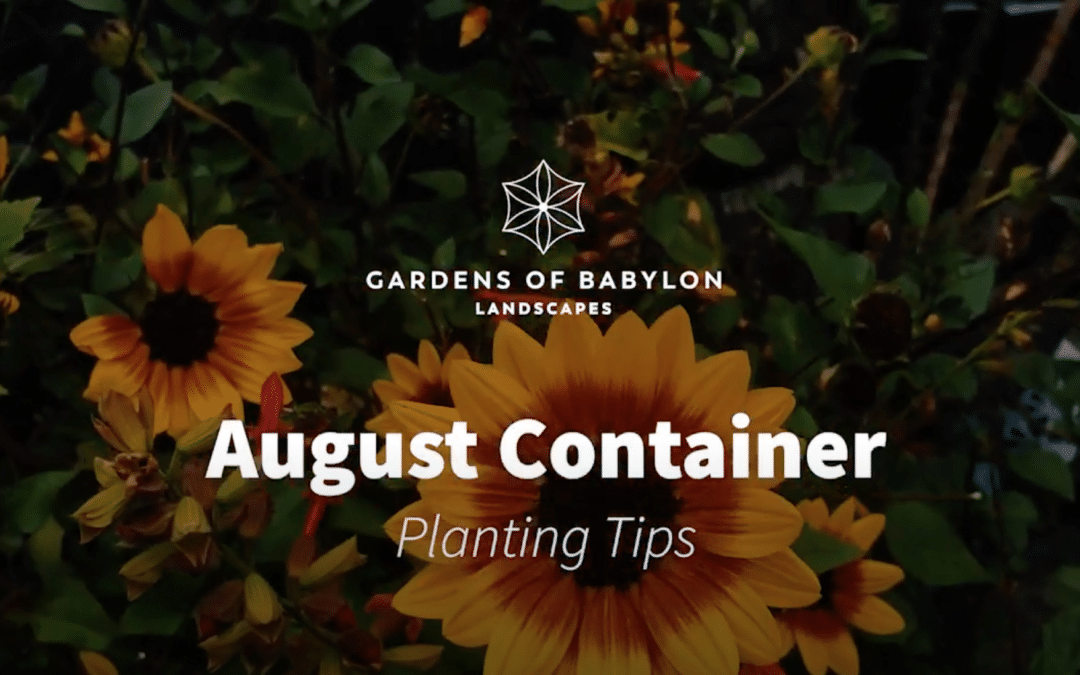
August Container Planting Tips
Hey, my name is Dana with Gardens of Babylon and today we’re going to talk about August container planting and I’m going to give you some tips and tricks.
All right so for August containers this is a transition month, we’re moving out of summer into fall and so our containers have been really going strong all season long and this is the time to just sort of look and see what’s going on, like can we salvage anything do we need to get our pruners out and maybe tidy up a little bit and deadhead.
Tidying up and deadheading the containers
This container actually looks amazing you can see the lavender is just really flush and the Lantana. I do see this is very common so this cute these coral bells we’re just gonna do a little bit of deadheading. You don’t have to go all the way down to the base, I just want to sort of tidy up a little bit and get anything that’s kind of got its thing out. So that’s the first step for your containers.
So now that we’ve sort of tidied up a little bit we’re going to look and see if there’s any dead spots is there anything that we could sort of liven up a little bit. Some containers you will have to pull some things out because they’ve just sort of done their thing for the season.
Transition Plants: Summer to Fall
But these are some great transition pieces. This is a Snapdragon it’s a great transitional piece because it takes still our hot summer heat and it will actually transition into fall and take some frost so this is perfect. I feel like we’ve got a little bit of a bare spot so i will come in and just tuck in this color right here it’s going to be perfect.
Most people don’t realize that Lantana does take a little bit of cold as well. So another fun idea other than Snapdragons is we, I love to use vegetables in my fall containers. This is a Chard it’s a bright lights chard and you can see it’s multi the different plants they’re going to be like yellows and bright reds. So this would be another thing to pop in and this is going to grow up and give you some color as it starts to turn cold and you can eat it which is amazing.
Succulents are also a an idea to add because this is still drought hot and you want to have things that are going to take that drought in that heat that’s not going to require so much watering.
August is a fertilizing month
August is a time to fertilize, fertilize and fertilize because your pods have been going strong all season long and so it’s time to sort of give them a little bit of a rejuvenation. I either love to use like a good organic fertilizer liquid organic fertilizers are amazing and actually just spill it onto the foliage because right away that fertilizer if it’s liquid will go straight into the plant and work straight away.
Another thing we’re going to talk about is how to sort of amend the soil on top let’s talk about that next. All right so in August we don’t necessarily have to go in and take out soil and add new soil what i like to do is called top dressing.
So i just love to use a natural soil conditioner it’s a cross between a really fine mulch and almost could be soil and it decomposes very very quickly because it’s very fine. I love to use soil conditioner and i like to just put it on the top of the soil in and around all of my containers this time of year.
All right so this is it for august container planting tips the main thing is just have fun if you need to add some new things find things that spark joy for you it’s the little things in life.

